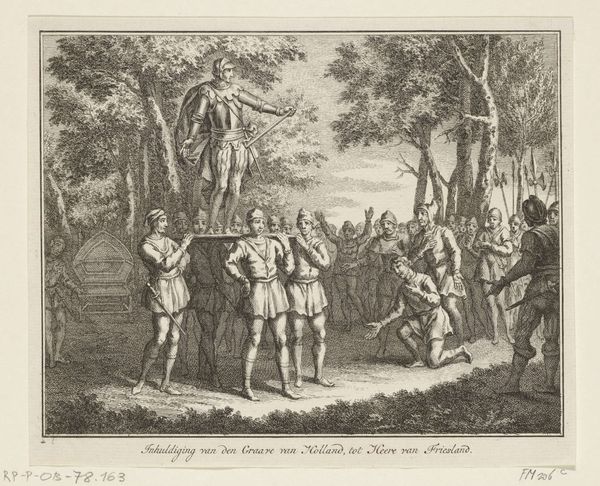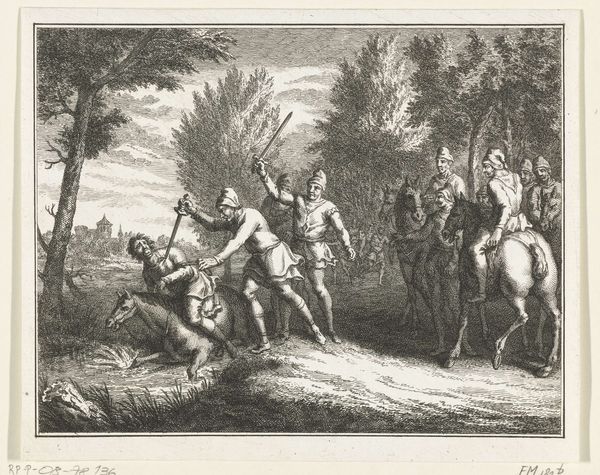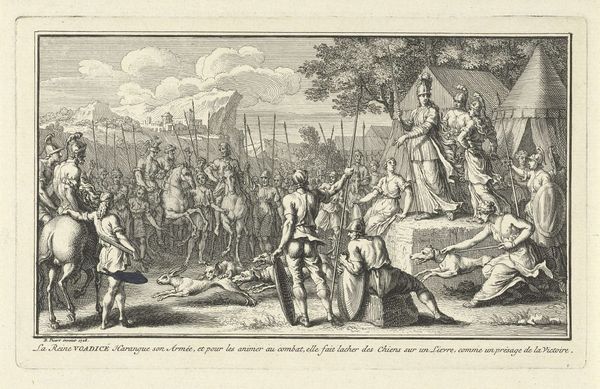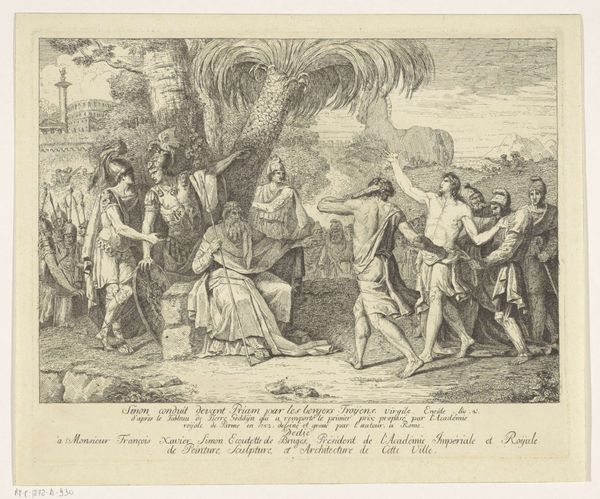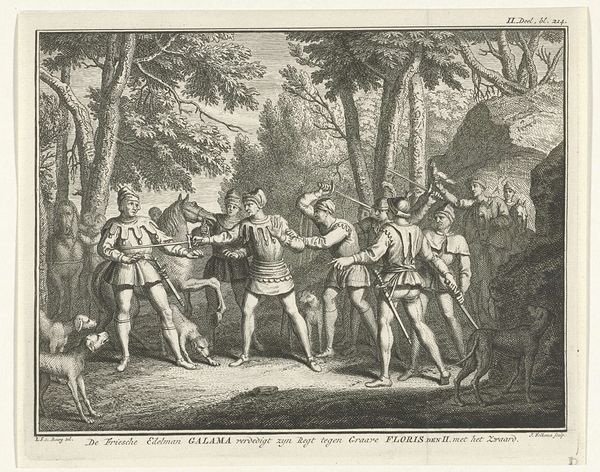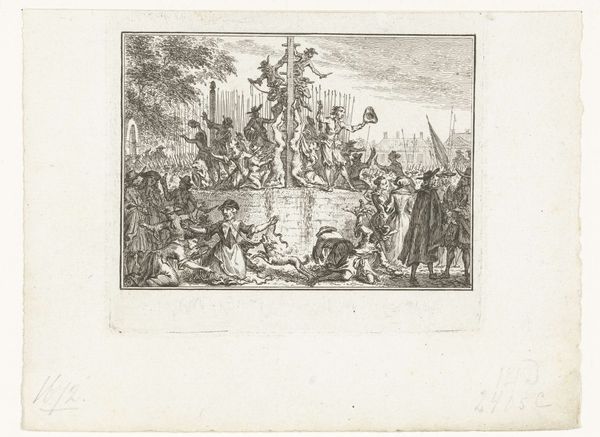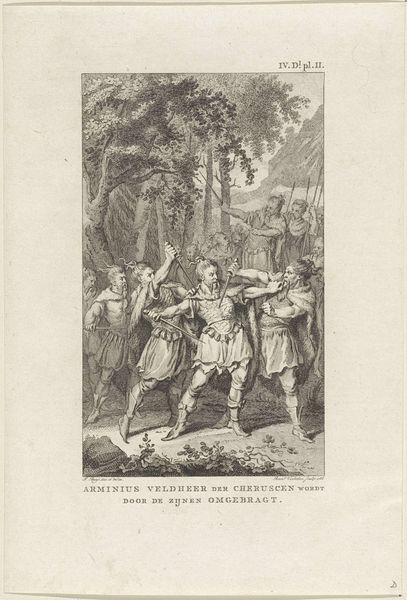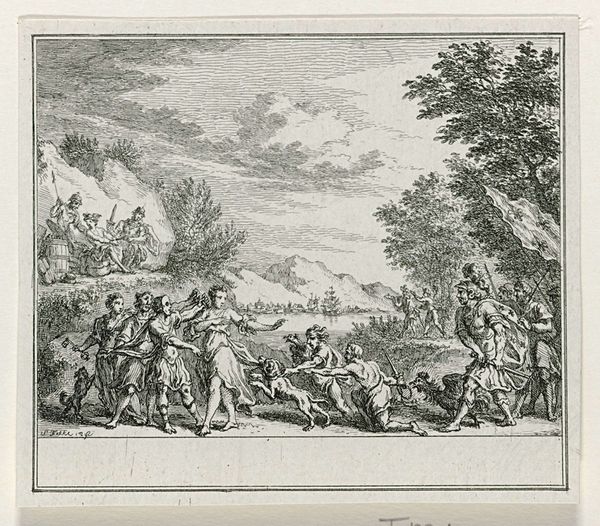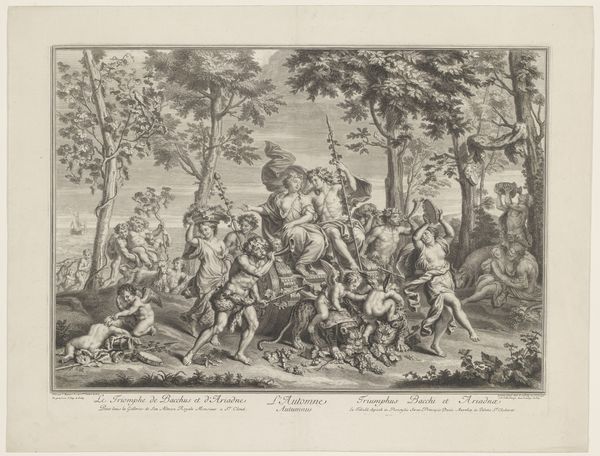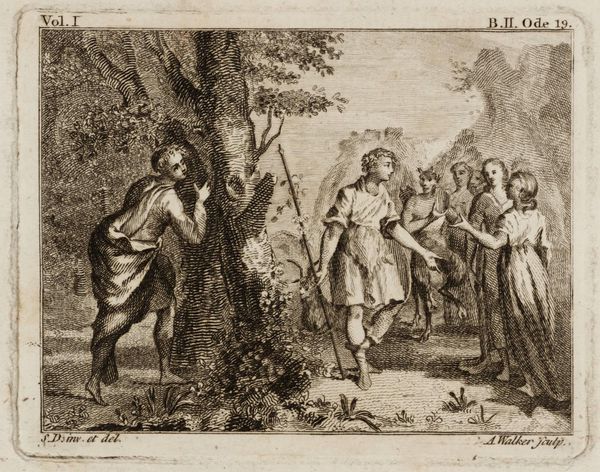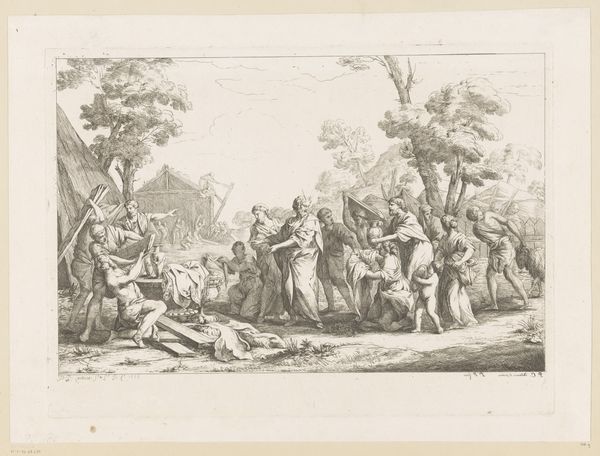
print, engraving
#
baroque
# print
#
pen illustration
#
old engraving style
#
figuration
#
line
#
history-painting
#
engraving
Dimensions: height 85 mm, width 107 mm
Copyright: Rijks Museum: Open Domain
Simon Fokke’s "Willem I wordt Heer van Friesland, 1195" was crafted in the 18th century using engraving, a printmaking technique rooted in skilled handwork. Look closely and you'll notice how the linear quality of the engraved lines defines every aspect of the composition. The sharp, precise cuts into the metal plate allowed Fokke to create intricate details, from the texture of the forest to the expressions on the figures' faces. The image depicts Willem being carried by the working class, as a sign of respect. The figure on the right is working on a printing press. Engraving demands meticulous labor, reflecting the social context of the 18th century, when craft was deeply intertwined with commerce. The image has a graphic quality, sharply contrasting with painterly or sculptural works. This reminds us that printmaking allowed for wider distribution of images, engaging a broader audience and fostering social and political discourse. By recognizing the importance of materials, making, and context in the creation of this artwork, we gain a deeper understanding of its cultural value and the role of craft within the larger history of art.
Comments
No comments
Be the first to comment and join the conversation on the ultimate creative platform.
